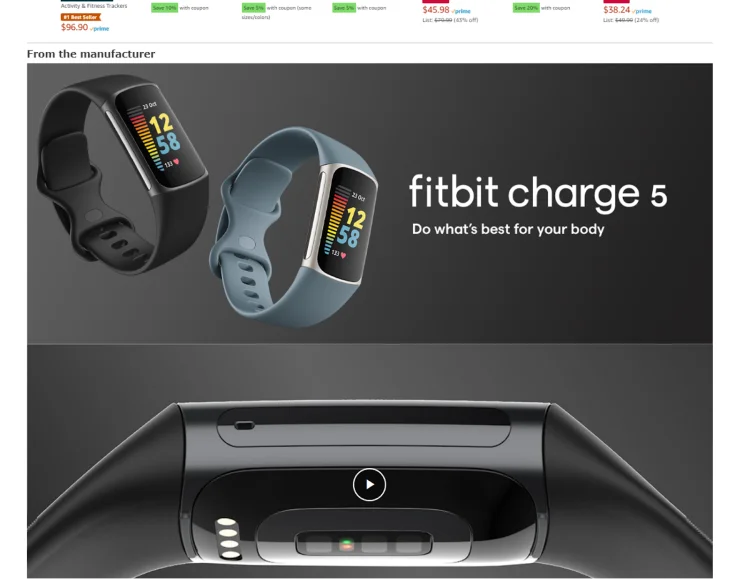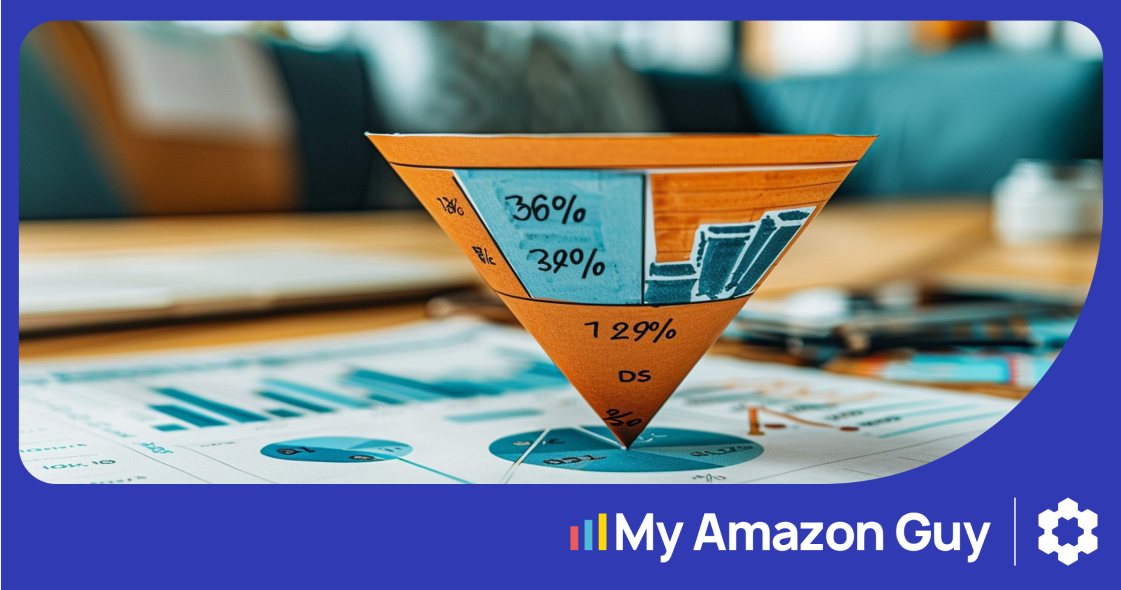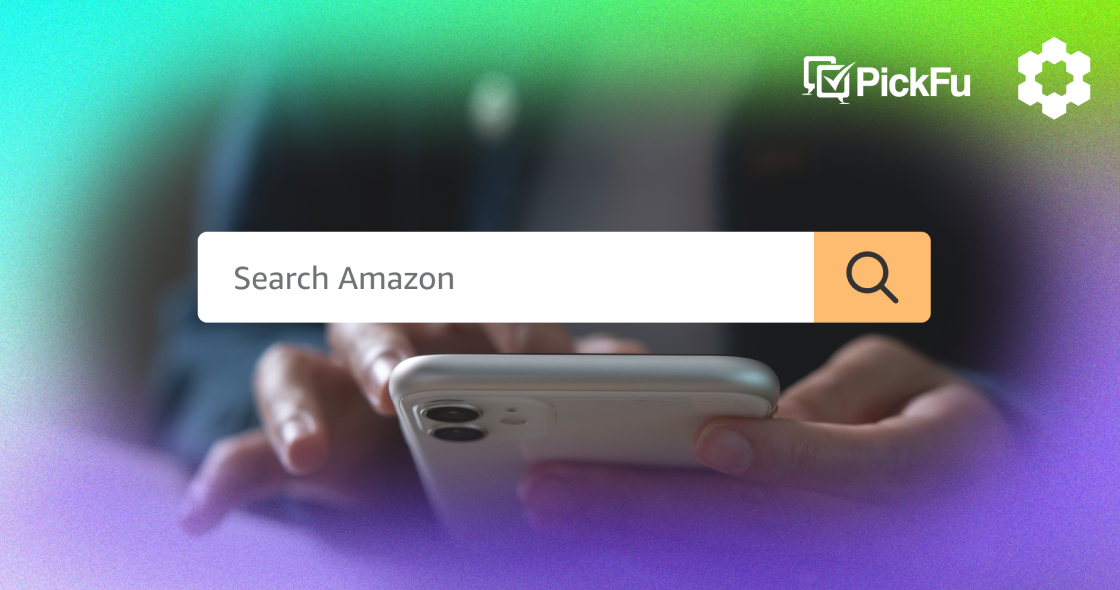There is no better indicator of success on Amazon than if a seller has a solid Amazon Brand Strategy. While it is possible to make money and grow sales without a good brand strategy, your efforts on Amazon are so much more effective if you’re selling more than just a product.
In this article, we’ll discuss what makes for a good brand strategy, the different programs that sellers have available to them, and how to set yourself up for long-term success.
A Brand Is More Than Just A Group Of Products
The biggest mistake we see Amazon sellers make is that they act as if they’re selling a product, when really there’s a lot more to building a successful brand on Amazon. Not to be trite, but your goal as a seller should be to sell solutions to your customers’ problems.
Brand positioning is crucial, and it starts with having a clear target audience. A group of people that match a specific demographic or psychographic. Then, sell products that the audience will identify with and purchase.
Almost every successful seller we’ve seen sells more than just products: they have a brand that customers want to engage with.
Brand Registry is The Start, Not The End
Brand Registry unlocks a lot of opportunities for sellers, many of which we’ll discuss in this article. But it’s vital to keep Brand Registry in perspective: It’s just the start of your brand development strategy, not the end game.
Although most successful sellers have Brand Registry, and most sellers without it aren’t successful, it’s not what makes the brand. Instead, Brand Registry is like a box of tools that sellers have at their disposal. It’s what you do with those tools that matters.
Keeping this perspective helps sellers develop a consistent and cohesive brand positioning strategy that exists outside of the “industry standards” that can sometimes pigeon-hole sellers into generic approaches, which in turn prevent sellers from connecting with their customers.
Don’t Get Stuck On Your Amazon Business Strategy
Keeping with this theme, the most effective brands on Amazon are also the most effective brands outside of Amazon. In other words, their brand and brand strategy is bigger than Amazon.
Amazon might be a really important sales channel for brand success, but it shouldn’t be your only channel if you’re developing a successful ecommerce brand. It’s important to keep in mind that Amazon is one ecommerce channel in an ecommerce business strategy that might include selling platforms like Shopify, Etsy, eBay, Walmart, or others. You may also have retail content on YouTube, Pinterest, Instagram, or TikTok.
Without an all-encompassing ecommerce brand strategy, sellers can frequently get “stuck” in the mentality that Amazon is where their focus should be. But effective brands know that a comprehensive, omni-channel approach is better for long-term growth.
That being said, Amazon does give Brand Registered sellers a lot of tools to leverage. And which tools you use, as well as how you use them, can make a massive impact on the efficacy of your ecommerce Brand Strategy.
Leverage All Of Amazon’s Content Types
Since Amazon is an ecommerce platform, it’s not usually considered a content platform. But there are actually a lot of places to develop content on Amazon. And each piece of content you create on Amazon gives your customers another opportunity to interact with your brand.
By using the following tools, you can build trust with your customers, establish your ecommerce brand, and create an engaging buying experience.
A+ Content
This is one of the first tools sellers end up taking advantage of when they get Brand Registered. A+ Content is “below the fold” content that is highly customizable, and often a very visual experience.
The most effective A+ Content is highly visual, and product specific. It should help the customer visualize owning the product, inform them on the benefits and uses of the product, and answer common questions customers have.
Once a seller has created at least 15 A+ Content pages, they can qualify for Premium A+ Content modules, which include:
- Interactive hover hotspot modules
- Video modules
- Enhanced comparison charts
- Larger images
- Carousel modules
- Q&A modules
Amazon released a rather effective guide to building quality A+ Content pages, which you can find here.
FitBit is a great example of highly visual, engaging A+ Content, as you can see from their use of the Premium A+ Content modules on their Charge 5 listing.

The Ecommerce Brand Story
The Brand Story is very similar to A+ Content, and is actually accessed and created using the A+ Content Manager in Seller Central. However, the Brand Story differs in that it should focus on the Brand, not specific products.
The Brand Story is another part of the detail page that sellers can make their own. High quality Brand Story pages match the brand aesthetic, messaging, and purpose. Again, it’s important to remember that your brand should be more than just a collection of products, and the Brand Story is a great place to showcase that.
Amazon Brand Stores
Brand Registered sellers are able to create Brand Stores. The simplest way of thinking of these is that they are websites inside Amazon.
Although not quite as flexible as a store you’d be able to create with Shopify, WordPress, or other platforms, Brand Stores do allow brands a massive amount of flexibility regarding how they present themselves on the platform.
Effective Brand Stores should be visually consistent, easy to navigate, and informative.
The HEY DUDE SHOES Brand Store is a great example of just how effective they can be.
Amazon Posts
On the product detail page, just before you reach the reviews section of the listing, you’ll often find examples of Amazon Posts. This feature is a widely underleveraged tool by most sellers.
The way to contextualize Posts is to think of it similar to posting on social media (like Instagram). In fact, if a brand already has a social media presence, we think an effective way of creating posts is to repurpose their existing social media content through Amazon Posts.
In addition to appearing on detail pages, Posts often show up in their own page on the Brand Store.
Posts allow brands to engage with customers in a really low-pressure situation. Amazon users can also “Follow” brands through Amazon posts, which gives sellers even more through Customer Engagements and Brand Tailored Promotions.
Customer Engagements
Amazon doesn’t allow brands very much direct communication with their customers. However, a relatively recent program Amazon’s implemented is Customer Engagements.
These are email campaigns you can send to various segments of your brand followers. When you launch a new product, want to promote a best selling SKU, or let a customer know about a product that they would likely be interested in, you can send a Customer Engagement email.
Although the segments you access and the campaign types are limited, this tool is great for sellers because it allows you to engage your customers outside of the Amazon platform.
Brand Tailored Promotions
Very similar to Customer Engagement campaigns, Brand Tailored Promotions let sellers create promotions that only their followers can access, and then send those promotions via email to those followers.
This tool is still new, and not all Brand Registered sellers have access to it. However, for those sellers that have access to it, it provides much more flexibility in when you can send a customer an email.
Both Brand Tailored Promotions and Customer Engagements are very effective for launching products, sales events, and keeping your customers engaged consistently overall.
Play The Long Game
An important consideration to keep in mind is your long-term Brand Strategy. What will your brand be doing in a year, two years, or five years? Are there different products you’ll be selling, and how will you grow to help your customer base?
Having an idea of what you plan to do in the future informs your Brand Strategy now. It can keep you grounded in tactics that will pay dividends as time goes on.
No Black Hat Brand Positioning Tactics
While this should go without saying, it is not a good idea for sellers to participate in black or grey hat tactics. Many sellers violate Amazon’s terms of service, use dishonest tactics, or resort to slimy competitive practices because they think it will give them an edge.=
Ultimately, though, all this does is make things harder for the seller down the road. It’s easier to grow when you’re not having to always reinstate your account or listings because you’ve done things you said you wouldn’t when you joined the Amazon marketplace.
Sellers that use black or gray hat tactics sacrifice long-term growth for short-term profits. And that’s a bad Brand Strategy.
Boosting organic rank on Amazon doesn’t have to be shady: PixelMe can help sellers implement a TOS-compliant ranking strategy that will yield results both for short- and long-term goals.
Keeping Customers Is Better Than Finding New Ones
Keeping in tandem with long-term growth, it’s important to remember that once you’ve developed a brand with a target audience, it’s far easier to continue to serve that audience than it is to convince new people to buy from you.
We’re not saying that you shouldn’t try to get new customers—obviously you should. But there’s also a better reason to become your customer when there are also reasons to stay your customer.
Making the whole customer experience with products exceptional helps build a relationship with the brand. Tomer Rabinovich is a big believer of “the 6-star customer experience” to help build that relationship.
Watch the full 6 Minutes with Carbon6 interview here: Building Brand Success through Customer Experience with Tomer Rabinovich
As you develop new products, produce new content, and adjust your messaging, keep your current customers at the top of your mind.
What Are The Next Steps For Your Ecommerce Brand Strategy?
What we’ve discussed in this article are just some of the many things that sellers can use in their brand development. Keep in mind, building a successful Amazon brand strategy is a process, not a task. You can’t just check it off the list.
So the question to answer is, what are your next steps?
Pick something from the areas outlined here, and take a step now to improve your Brand Strategy in that area. It could be making your Brand Store more useful or sending out a Brand Tailored Promotion.
If you’re stuck on anything, BLAZON specializes in helping brands build and manage effective Brand Strategies. It’s a core component of BLAZON’s ethos to leverage all possible tools on Amazon for growth.
You can reach out for a free ecommerce brand strategy audit at blazonpros.com.








